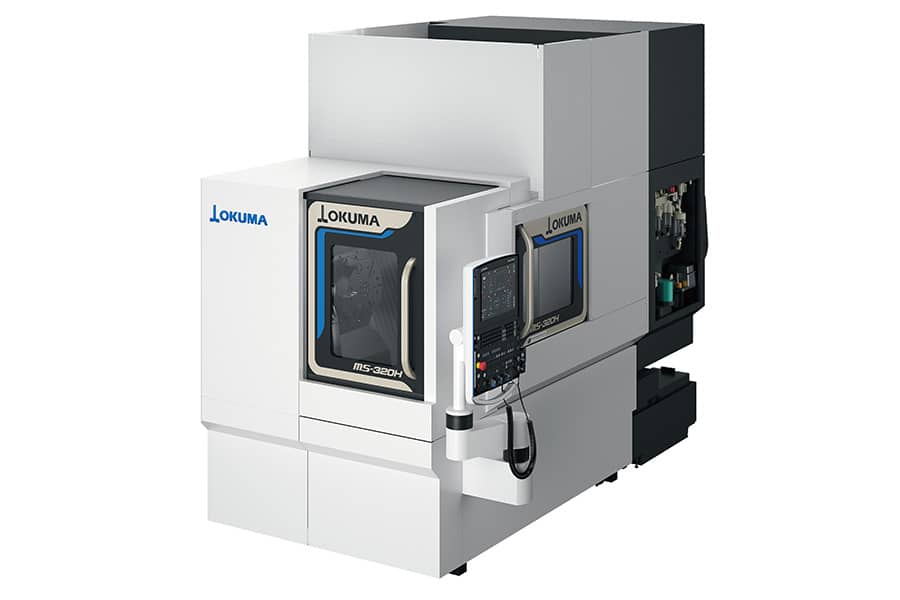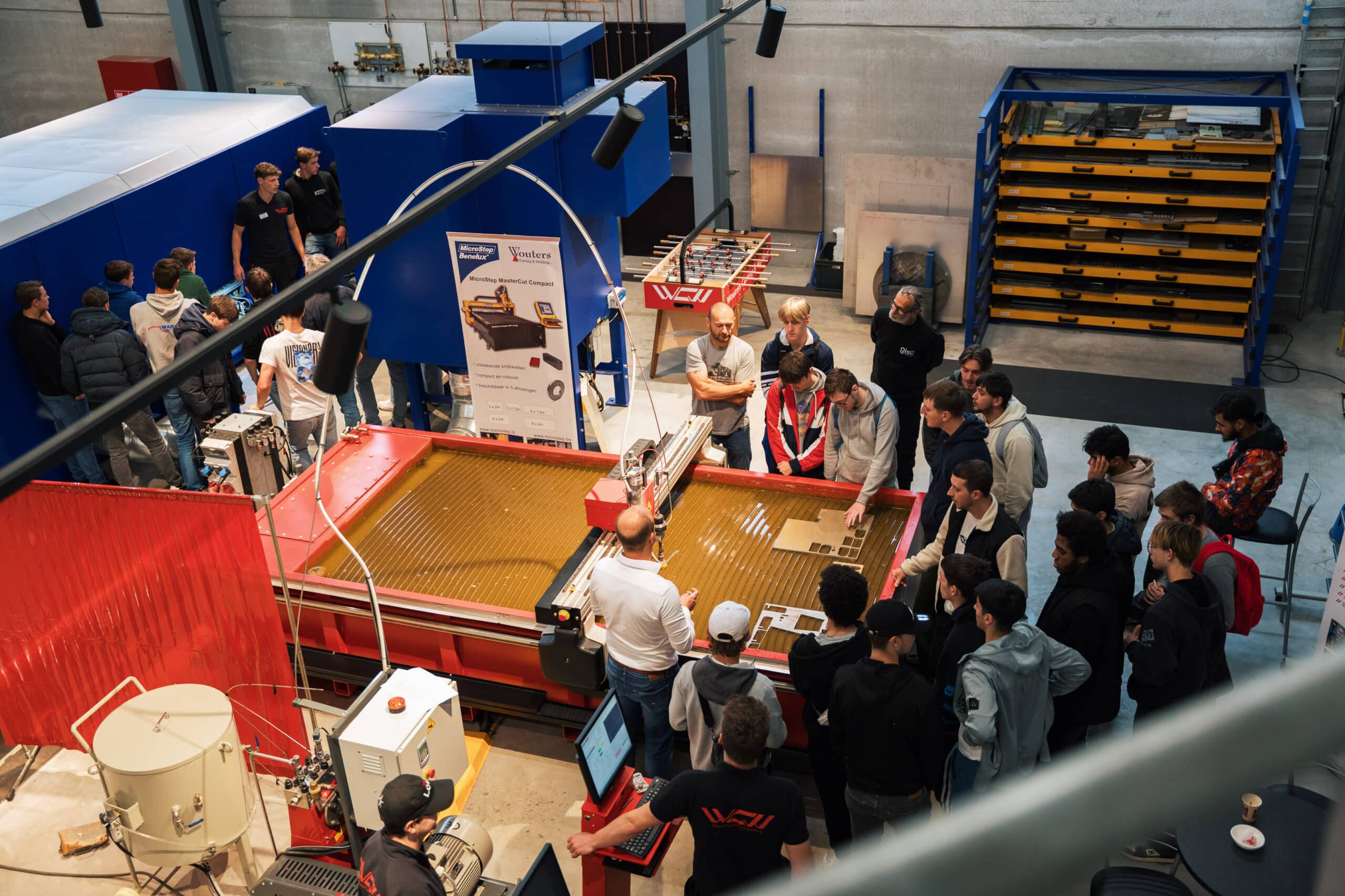
Trimming machines prove themselves as a defining final link
The importance of an efficient deflashing phase in plate processing is now commonplace. However, the ultimate impact extends well beyond what is intended out of mere qualitative necessity. AIS, for example, generates both productive and qualitative added value with its two separate Q-Fin deflashing machines.
Erwin Maraite, manager of AIS Construct in Bütgenbach, started his company in 1992 in a nearby village. Initially it started with smaller metal works, but the activities increased so much that in 1999, with at that time only one employee and an apprentice, the company moved to its current location in Bütgenbach. From then on, the company expanded on an almost continuous basis. "Our company today has 25 employees," Maraite quips. "We are mainly engaged in metal and sheet metal processing, and we also manufacture accessories for trucks, such as bumpers, exhaust systems, storage boxes, and all kinds of trim. These are our absolute core activities."

Need for paintwork deburring machine
In 2017, AIS Construct purchased its Bystronic laser cutter. The main goal at the time was the expansion of sheet metal processing, for which the company had invariably relied on its plasma cutter until then. Initially, the 4 kW 2,000 mm X 6,000 mm fiber laser cut pieces that were presented to the customer square edged, but AIS was soon required to deliver the pieces deburred and with edge rounding. The reason for this was obvious: most of the sheet metal delivered would later receive a powder coating, and then the angled cutting edges produced by the fiber laser would be a real scourge: the coating would not hold on to the sharp edges, and would eventually crack, or even separate from the substrate. Hence the need for a deburring machine, which breaks and rounds this angle to specification in a controlled manner.

Close collaboration between LVD and QFin
"This prompted us to purchase these grinders," says Maraite. "After a long search, we finally ended up with the company Q-Fin, also and mainly because they worked closely with our trusted supplier LVD." LVD and Q-Fin had been building a particularly fruitful symbiotic relationship for several years, and it prompted AIS Construct to expand its then-investment in a new LVD bending machine for pieces up to 800 tons and 7 m, to include the two separate Q-Fin deflashing machines. The performance of the machines indisputably exceeds that of competing suppliers. Maraite: "For us there was only one choice left, because the Q-Fin deflashers smoothly achieve the required edge rounding to radius specification of 1.5 to 2 mm diameter. In addition, the machines are very good and infinitely adjustable."
Simultaneous processing multiple piece sizes
Maraite also chose to diversify, by immediately purchasing 2 different Q-Fin machines. A smaller F200 machine for the smaller pieces in the range, as well as an F1200 machine for the larger sheet metal parts. From an organizational point of view, this gives the company a very big advantage, as it allows multiple part sizes to be finished simultaneously, without creating bottlenecks. Thus, significantly more dead time is saved. Moreover, the existing parameter settings can be maintained in each of the machines, without having to adjust between different sequences in the machine. This gives the opportunity to simultaneously start finishing different types of materials in larger runs. "For example, we regularly produce large series of hinges, for which in other circumstances a single machine would be reserved for a long time. Now the continuity of our entire production remains guaranteed," said Maraite.

Higher finish rate at higher speed
There is also an additional, qualitative advantage to this splitting: the smaller pieces obtain a significantly higher degree of finish in the small machine than can be achieved at the same speed in the large machine.
This is due to the distinct concept of each of the Q-Fin afbramers: the F200 XL machine handles the pieces by means of two static abrasive brushes, while the two brushes of the large 1200 machine perform an oscillating brush pattern. This also shows the added value of the small 200 mm wide machine: with its vacuum power, the F200XL offers fixation of small products as small as 15 x 15 mm in size. On the other hand, there remain tasks assigned exclusively to the F1200. Maraite: "To reach R2, we absolutely have to use the large machine. It can achieve the radius 2 mm in a single pass, the only condition is the pretreatment. There again, a single pass with the angle grinder is sufficient. Direct input, without pretreatment, is disastrous for the life of our abrasive brushes."

Guidance operators
Given the current business activity at AIS Construct, the deflashing machines rarely stand idle. Nevertheless, despite the operator-friendly HMI touch screen on each of the machines, Q-Fin still remains closely involved in guiding the operators where necessary. After all, experience is an important asset. Maraite agrees: "As soon as the brushes have been set, it is of course important to set the right throughput speeds, depending on the sheet thickness, to obtain the correct result. The operation is in fact very simple, because on the one hand it only involves a few parameters, and on the other hand both machines react very well to changes entered." The decisive factor here is the easily adjustable pressure feed of the brushes onto the workpiece: If the result is insufficient, one can very easily increase the pressure on the Q-Fin machines in particular. One can thus achieve the desired finish infinitely via fine adjustment, unique in the industry.
Efficient afbraming
Finally, the manager takes stock of his investment in the separated deflashing line: "An efficient deflashing phase is an integral facet of our performance as a company, in terms of quality, production and logistics. Our Q-Fin deflashers are therefore a decisive final link, and I can recommend our current concept to everyone in the industry."
Heeft u vragen over dit artikel, project of product?
Neem dan rechtstreeks contact op met Q-Fin Quality Finishing Machines.
 Contact opnemen
Contact opnemen



